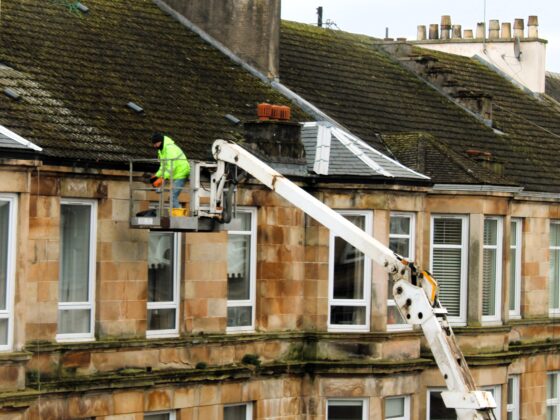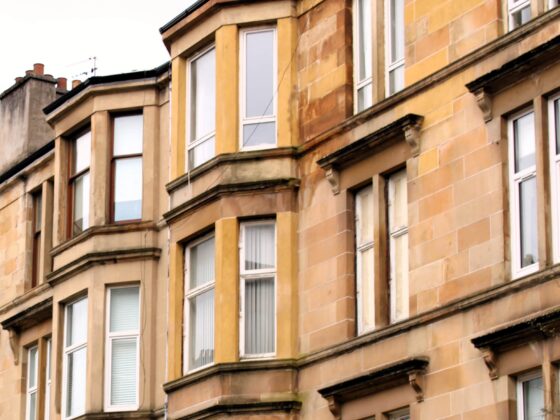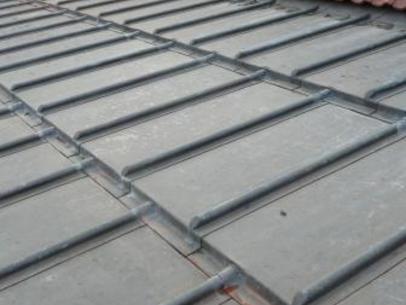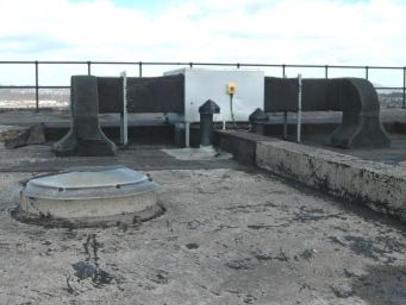Why is it important to maintain gutters?
Cleaning your gutters is a key way to maintain your property’s value as it can prevent damage caused by damp. Due to climate change, rainfall in Scotland has increased significantly over the last 70 years and gutters need to be maintained to cope with this change.
If a gutter is blocked by plants, leaves, or bird guano, it can leak and cause damp problems within the walls of a tenement building. Untreated damp can cause decorative or structural damage to your building, so it is important to act quickly.
What to look out for
Keep a regular eye on the gutters of your building and look out for damp and stains underneath the gutter. These can be first signs of leaks and overflows. If you can see plants growing out of your gutter, even if they are small, this likely means the gutter is blocked and water is overflowing.
Depending on the type of gutter, also look out for fixings that have come away from the building, rust on gutters made of cast iron, and corrosion problems at the joints between gutter lengths.
If you live in an area with lots of trees and birds, it is recommended to clean your gutters once a year, otherwise it’s good to do so every two years. There are various gutter types that require different care and attention. Find out more about how to maintain different types of gutters.
 Consider fitting a leaf guard if you live in an area with lots of trees.
Consider fitting a leaf guard if you live in an area with lots of trees.
If you live in an area with lots of trees, consider fitting a leaf guard over the outlet to the downpipe to help prevent blockages in the pipe, but make sure to keep the leaf guard itself clean.
If you are replacing your gutters, increase their size so they can cope with more rain and add an undercloak to protect against rainstorms. An undercloak is a strip of material that is installed at the roof verge, where the edge of the roof meets the end wall of a building.
When it comes to cleaning the gutters on a tenement building, one option is to use a vacuum gutter cleaning system. These systems use a high-powered industrial vacuum machine connected to a set of carbon fibre poles and sucks materials from the gutter. A camera can be attached to the pole end, so the operator can see what is happening. Check out this article for more information about vacuum gutter cleaning systems. You can either purchase a cleaning system yourself or search online for a vacuum gutter cleaning firm near you.
Who pays?
As always, check your title deeds before going ahead with gutter repairs to see if they state who is responsible for them. If your title deeds don’t say anything on the matter, you will need to follow the guidance in the Tenements Act.
Gutter repairs are almost always considered common repairs, which means all owners in a tenement building are responsible for their maintenance. Replacing gutters so that they are better able to cope with climate change is an incidental improvement. Therefore, it is considered as maintenance and only requires a simple majority to go ahead.
Further information
For more technical information, check out this Historic Scotland Inform Guide on damp causes and solutions, and this Q&A from the Society for the Protection of Ancient Buildings on rainwater disposal.









